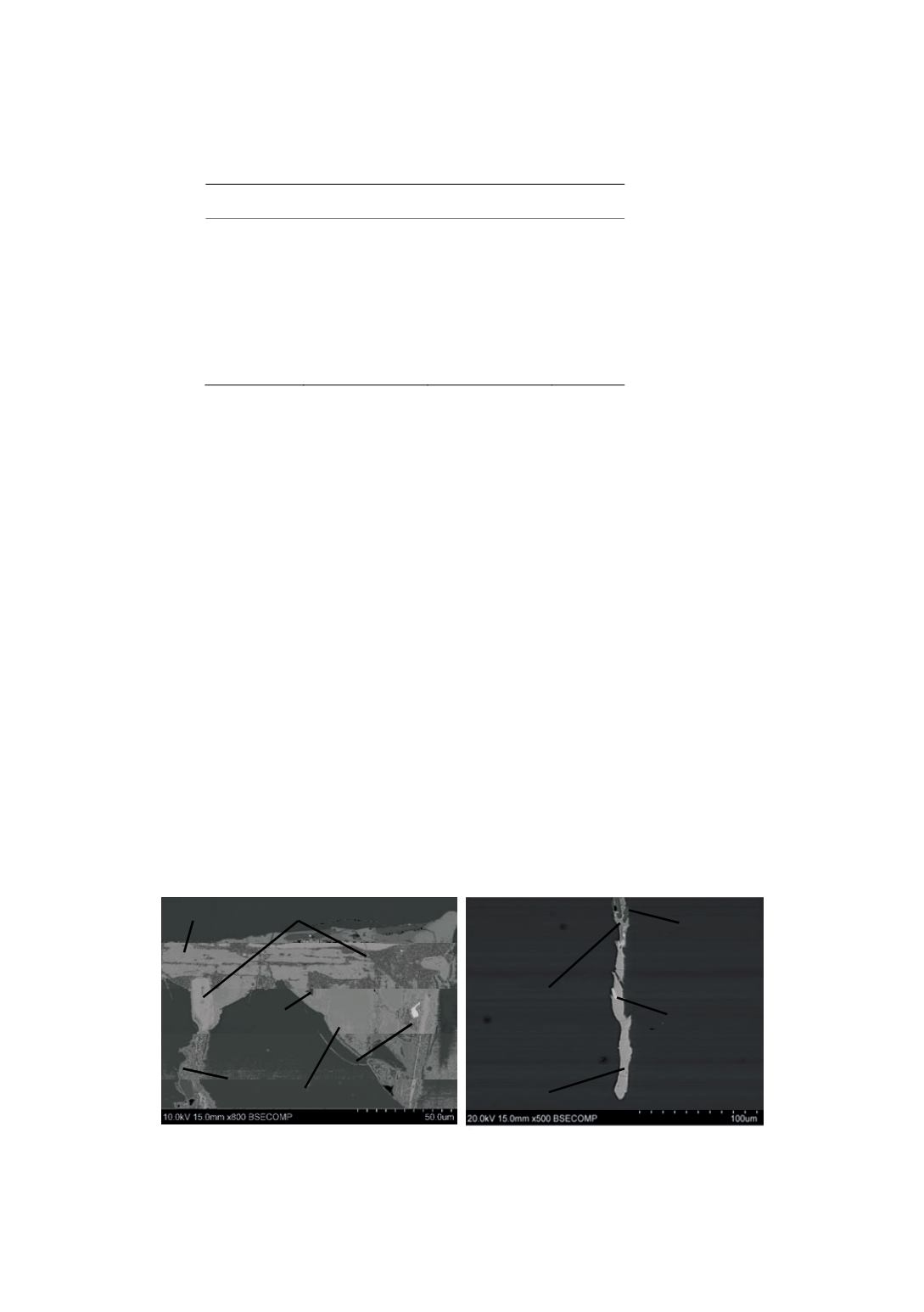

Table 4:
SiStruc analysis performed on the untreated and the treated sample
Phase
%wt. untreated
%wt. annealed
Relative
variation
FeSi
2
0.458 (47%)
0.361 (48%)
-21%
Al
6
CaFe
4
Si
8
0.190 (20%)
0.104 (14%)
-45%
CaAl
2
Si
2
0.184 (19%)
0.118 (16%)
-36%
TiFeSi
2
0.093 (10%)
0.067 (9%)
-28%
Al
8
Fe
5
Si
7
0.023 (2%)
0.075 (10%)
+226%
TiSi
2
0.009 (1%)
0.009 (1%)
0%
Al
3
FeSi
2
0.009 (1%)
0.015 (2%)
+67%
TOTAL
0.966 (100%)
0.749 (100%)
-22%
The total quantity of intermetallics decreases after the annealing. FeSi
2
is the most
expected compound in both samples. The quaternary phase and CaAl
2
Si
2
follow, but
in the annealed sample their quantities decrease. TiFeSi
2
is present in the same
relative mass fraction for each sample. Al
8
Fe
5
Si
7
is expected to increase after the
annealing with respect to other phases. TiSi
2
and Al
3
FeSi
2
might be found in low
amounts.
3.2 EPMA and BSE-SEM analysis
3.2.1 Untreated and treated sample at 600°C
Figure 4 show two complex intermetallic particles from the untreated sample and the
sample treated at 600°C. These two samples have been compared in the same
paragraph since the microstructure was very similar. The particles come from the
solidification fronts meeting point. This position in the cast lies in slightly below the
centre of the thin cast. The material solidifies last in this section. All the phases
predicted by SiStruc
®
can be seen in the two figures. FeSi
2
is both present at its high
temperature (HT) and low temperature (LT) structure. They could be recognised from
their stoichiometry, as well as by the presence of cracks and Si precipitates in the LT-
FeSi
2
. Al
6
CaFe
4
Si
8
and Al
8
Fe
5
Si
7
do not show peculiar shapes and are detected all
over the sample. CaAl
2
Si
2
is mostly present in the centre of the cast, especially at the
edges of elongated intermetallics. TiFeSi
2
comes either as large particles at the
borders of the intermetallics, or as rectangular precipitates in the intermetallics' cores.
Eventual cracks formed go through FeSi
2
without crossing TiFeSi
2
particles in the
majority of the cases. Other dissolved elements form compounds in minor quantity.
Figure 4
: Two particles coming respectively from the solidification fronts meeting point of the
untreated sample (a) and from the bottom of the treated sample at 600°C (b)
FeSi
2
CaAl
2
Si
2
TiFeSi
2
Si precipitate
Al
9
Fe
5
Si
8
Al
6
CaFe
4
Si
8
CaAl
2
Si
2
Al
6
CaFe
4
Si
8
TiFeSi
2
FeSi
2
88


















